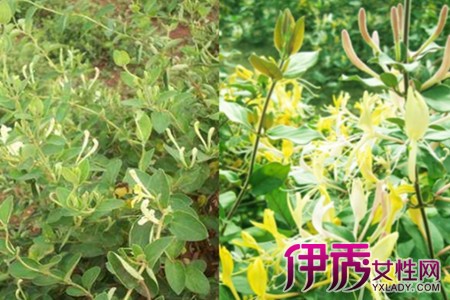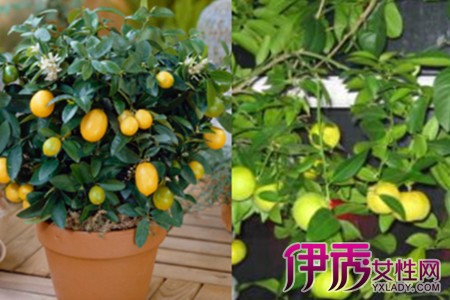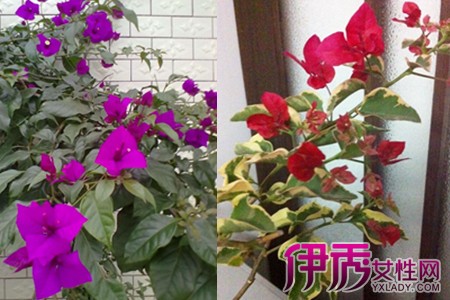It is no longer difficult to learn the planting method of honeysuckle to keep healthy and become rich.

Many people rumor that the effect of planting honeysuckle is very different from that of wild honeysuckle, in fact, it is only a psychological effect. The honeysuckle grown by everyone is bigger and healthier than that in the wild, and there will be no discount as long as the planting method works correctly. Today we are going to teach you how to plant honeysuckle so that more friends can plant this herb in their fields.
If you want to grow gold and silver, you should first know when it is most likely to survive. Every year, spring and autumn are the seasons for planting honeysuckle. To grow honeysuckle, you must first select suitable seedlings. Do not choose too large seedlings. Seedlings of more than ten centimeters are the easiest to survive. Honeysuckle does not have high requirements for soil, as long as the soil is not too hard and breathable.
Honeysuckle is not a domestic flower, so the distance should not be too close, otherwise it will hinder its growth. Usually one can be planted at a distance of one meter multiplied by 1.5 meters, and the hole is dug before planting. The pit should not be too deep or too shallow, only 30 or 40 centimeters, and then plant honeysuckle one by one.
The first watering after planting must be thoroughly watered, otherwise the newly planted honeysuckle will be difficult to take root. If the climate is drier in late spring and early summer, it probably needs to be watered twice a day. Rain Water does not need to be watered every day when he is abundant in summer. Rain Water is the best natural nutrition.
After honeysuckle no longer wilts and grows normally, regular fertilization is needed. Organic fertilizer, phosphorus and potassium fertilizer can be used to fertilize it. After turning over the soil at the root of honeysuckle, sprinkle the fertilizer in and cover a layer of soil of one or two centimeters and pour water on it. Honeysuckle is easy to attract aphids, so it is essential to kill insects once a month on a regular basis. As long as adhere to this culture method, when honeysuckle blossoms, you can harvest a large number of honeysuckle.
Planting method of Flos Lonicerae
Honeysuckle tastes sweet and cold and belongs to the meridians of the lung, heart and stomach. It has the effect of clearing away heat and detoxification and has a wide bacteriostatic spectrum. Pharmacological experiments have a good effect on typhoid bacilli, pneumococci, meningococci, pertussis, streptococci, Escherichia coli and so on. It is clinically used for febrile disease, febrile fever, blood dysentery, wind-heat cold, throat pain, erysipelas and other diseases. it is widely used in traditional Chinese medicine prescriptions, proprietary Chinese medicine production and export. Especially at present, honeysuckle is the main medicine in the prevention of SARS, and its price has been sold from 35 yuan / kg to 350 yuan / kg, which is simply a sky-high price. Now is a good time to develop planting. Honeysuckle is the dried bud of honeysuckle. Also known as Shuanghua, honeysuckle.
Honeysuckle is not strict on soil requirements, mountain beaches are suitable, strong drought resistance, poor ridge, can be planted in spring and autumn. Especially in the vast areas of western China, the soil climate is suitable, and there are planting traditions and techniques, which can be vigorously developed.
Honeysuckle is a perennial vine, which is mainly distributed by the forest side, stream, ridge and so on. It is suitable for planting in courtyard and returning farmland to mountainous areas, easy to manage, and can make full use of leisure time and picking by women and children. The flower yield per mu of artificial gardens can reach 120 Mu and 150 kg. According to the normal low price, the income can be more than 3000 yuan, which is several times higher than that of growing grain per mu. It can also prevent soil erosion and maintain ecological balance.
Cuttings grow seedlings and propagate quickly:
Honeysuckle can be cultivated by seed, root division and cuttage propagation. Honeysuckle is a double hanging fruit, and the 3-and 4-year-old plants can bear fruit. The berries are globose, black when ripe, and dried in the shade. Sow with picking in autumn of that year, or sow in March-April of the following year. Seedlings at the end of autumn can grow to about 1 meter, transplant and blossom in the third year. Fourth, five years later can enter the flowering and high-yield period. Cuttage seedling propagation and growth is fast, it can blossom in the autumn of that year, and reach the high yield period in the next year and the third year.
1. Strong branch selection: one-year-old branches and vines that are strong, disease-free and flowering are selected and cut into 15mur20cm nodes. There are at least 5 buds in each section, and the lower leaves are cut off to make ear cuttings.
2. Land preparation: select a small plot of land around the courtyard and apply basic fertilizer to make it into a low or high border 1.2 cm wide. In order to sprinkle water during drought and drain when it rains heavily. The row spacing of seedling plants is 10ml 15cm, the distance between plants is 5m 8cm, and 5000 seedlings are raised in one cent of land. The vine of the same year can grow to 1Mel 2m, which can be used for planting 8Mel 9 mu of land.
3. Cutting time and method:
Cuttings are best when plants begin to grow from April to May, and two or three days after rain. Water properly in advance during drought to keep the soil moist. The ear can be put into the ground with 0.5 cusp triacontanol or other root growth promotion agent 3-stroke 4 ears, leaving 2 or 3 buds on the ground, compacting the gap, so that the ear can be closely combined with the soil. Immediately after the cuttings are watered with water, it is beneficial to their survival.
4. Seedling stage management: seedling stage management is very important. Drought often occurs in the west from April to May, and plastic film or shade sheds are needed. Preserve soil moisture. In the second half of the month, the cuttings began to form callus, 25Mel began to take root in 30 days, and water was sprinkled every 5 days to ensure that the soil was moist. However, it should not be watered too much, otherwise it will cause decay and reduce the survival rate. The shoots will grow well after January, and the plastic film and shade will be removed on rainy or sunny days. In the same year, the seedlings can grow to 1m high and have 2 or 3 branches for transplanting in autumn or spring of the following year.
High yield of frame pruning:
1. Fertilization and watering: honeysuckle had better be planted in nests, and the hillside can be dug into fish-scale pits. There are 3 trees planted in a litter, 500 MUE 600 plants per mu, with a row spacing of 1.5 meters, a plant spacing of 1 meter, and a depth of 20 Mel. 39 cm. A litter of farm manure weighs 2 kilograms. It can survive in 15 days after planting. Three times of topdressing, one time of overwintering fertilizer, two times of flower picking fertilizer and one kilogram of soil fertilizer were applied every year, and watering and fertilization were carried out at the same time during drought to promote growth per mu and blossom more.
2. Scaffolding: honeysuckle is a half-branch woody vine, which allows it to climb, produce more branches, cultivate strong plants and produce more flowers. The frame is 1.2 meters high and 1.5 meters high, which should be strong and neat for many years of use. There are cement piles for pharmaceutical farmers in Shaanxi and Shandong. The courtyard can be planted into a fence according to local conditions. High and low to facilitate the picking of flowers, and pay attention to beauty and use.
3. Pruning time: from December in winter to February of the following year, the growing period is pruned immediately after flower picking. Heavy pruning is appropriate in winter and light repair at home during the growing period. Twining branches, cross branches, growing branches, diseased branches, weak twigs, downward branches. Through pruning to improve light, ventilation and other conditions, promote the differentiation of lateral branches and flower branches and increase the number of branches in the same year, so as to achieve stable and high yield every year.
4. the method of plastic surgery: Flos Lonicerae first branched from axillary buds in spring, and then gave rise to secondary branches, which could differentiate into four to six branches in a year. The axillary buds of new branches redifferentiate into fertile branches, and inflorescences and flowers are formed on them. Cutting off the long vegetative branches before budding will quickly differentiate into secondary reproductive branches and increase the number of flower bud differentiation. Generally speaking, flower buds with first to fourth branches can form flower buds. The branches after the fourth grade can not develop into flower branches due to the decrease of climate at the end of autumn. Pruning can cultivate the main stem, make the new branches evenly distributed, ventilated and transparent, expand the crown, produce more flower branches, and improve the yield and quality. Pruning should be carried out early, and the top should be removed when the plant grows to 30ml / 40cm in the same year, forming a main pole. Five vegetative branches were produced on it. Unfold in the form of three fists or five fists as a first-class stick. The first-class stem branch grows to 5 Mel 6 leaves, and it is still cut off when it is about 15 mi 20 cm long, which promotes the growth of the second-class stem branch. Remove weak branches and repeated branches in diseased branches to form third-or fourth-grade branches. It is mainly cultivated into umbrella-shaped or conical new plant shape, which lays the foundation for high yield in the future. In the third and fourth years, the diameter of the main rod is about 3 cm, and the plant height is 1.2 mi 1.5 cm, which is dense, neat and beautiful, which is convenient for field management to pick flowers. The planting entered the high yield period for 2-3 years. The dense planting garden can pick flowers 4 times a year, the yield per plant is 0.5 kg, and the yield per mu can reach 100 kg 150 kg.
5. control of diseases and insect pests: leaf spot is a common disease, which can be controlled with 400 times Bordeaux water solution or 100 times 100 times water solution, sprayed once a week for three weeks. The insect pests are mainly aphids, which are killed by spray of 1-dimethoate aqueous solution or 0.3% azadirachtin aqueous solution.
Planting methods and matters needing attention of Flos Lonicerae
The alias of honeysuckle-honeysuckle vine, Erbao flower, heron vine, honeysuckle. Origin: originally from China, it is distributed in most regions of the country. According to traditional Chinese medicine, honeysuckle is cold and sweet in nature and has the effect of clearing away heat and detoxification. Honeysuckle is a rare medicine. Let's give it a detailed introduction:
1. Soil selection: honeysuckle has no strict requirements on soil and can grow in both acidic and alkaline soil, but it is most suitable to grow in wet, fertile, deep sandy soil.
two。 Cultivation: before ① pots, wash the selected flowerpots, then spread a layer of broken tiles on the bottom of the pot, and then fill in a small amount of soil.
② put the honeysuckle seedlings into a basin, continued to fill the soil, and then compacted the basin soil and watered it thoroughly.
③ moves the flowerpot to a semi-shaded place to keep the soil moist and spray water frequently. Normal care can be done after a month.
3. Temperature: the suitable temperature for the growth of honeysuckle is 20: 30 ℃, and the suitable temperature for germination is 5 ℃. It has a strong ability to resist the cold. It has a strong ability to resist cold. Its leaves will not fall off under the environment of-10 ℃ sunrise, the wind can not be blown directly and with a certain humidity, and it can pass the winter smoothly when the temperature is as low as-30 ℃.
4. Watering: ① honeysuckle can stand dry and wet, but the soil should not be too wet for a long time.
When the temperature is high and the weather is hot in summer, ② needs to increase the amount and frequency of watering, and often spray water on the leaf and the surrounding ground in the early morning and evening.
③ needs to control the amount of water in winter and water the plants when the soil turns white.
5. Lighting: honeysuckle likes adequate light, but also can tolerate semi-shaded environment, potted room cooking should be placed in the sunrise place.
6. Fertilization: after sprouting in early spring and picking flowers in summer, it is necessary to apply fertilizer once, mainly applying organic fertilizer such as grass fertilizer or topdressing fertilizer, and urea or compound fertilizer at the same time. Fertilizer should be applied once or twice in the growing season, and the application of phosphorus fertilizer before flowering can make the flowers grow and flourish.
7. Propagation: honeysuckle can be propagated by sowing method, cutting method, dividing plant method and pressing method, among which sowing method and cutting method are the most commonly used.
8. Pest control: honeysuckle diseases are mainly anthracnose, powdery mildew and various insect pests.
When anthracnose occurs in ①, it can be treated by pouring dimethopone powder diluted 500 to 1000 times.
② can spray 1500 times of triadimefon when powdery mildew occurs at seedling stage, and methyl tobuprofen or carbendazim can be sprayed at pre-budding stage.
The main pests of ③ honeysuckle are red spiders, aphids and caterpillars, which can be killed by spraying 1200 times dilution of dichlorvos.
9. Pruning: ① honeysuckle usually blossoms twice a year. After the first batch of flowers have withered, appropriate coring treatment should be taken on the tops of new trees to promote the germination of the second batch of flower buds.
For plants over 3 or 4 years old, ② should cut off slender branches, overgrown branches, cross branches, dense branches, dry and withered branches, senescent branches and disease and insect branches as soon as possible after winter or early spring, so as to gather nutrients together and promote them to sprout new shoots and give birth to buds.
- Prev

Learn how to cultivate potted lemons to make multidimensional plants grow in your own home.
Lemons were farmed on a large scale by some fruit growers many years ago, but now more and more people want to grow lemons in their homes. In this way, it can not only increase the ornamental quality of indoor flowers, but also use the lemon for home consumption.
- Next

The cutting skills of triangular plum teach you the method of propagation of this kind of flower by hand.
Triangulated plum cuttings need to pay attention to several aspects, the first pay attention to the season of easy survival, triangulated plum cutting propagation in March-June is easier to live, like this kind of flower can be cut at this time. For the second requirement of soil, we can choose vermiculite + perlite to cut.
Related
- Fuxing push coffee new agricultural production and marketing class: lack of small-scale processing plants
- Jujube rice field leisure farm deep ploughing Yilan for five years to create a space for organic food and play
- Nongyu Farm-A trial of organic papaya for brave women with advanced technology
- Four points for attention in the prevention and control of diseases and insect pests of edible fungi
- How to add nutrient solution to Edible Fungi
- Is there any good way to control edible fungus mites?
- Open Inoculation Technology of Edible Fungi
- Is there any clever way to use fertilizer for edible fungus in winter?
- What agents are used to kill the pathogens of edible fungi in the mushroom shed?
- Rapid drying of Edible Fungi

